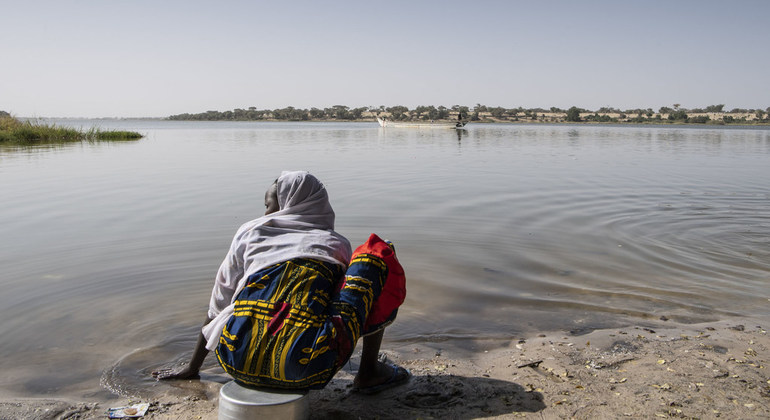Monica Ferro, Director of UNFPA Geneva, said the figures were “worrisome” and it was essential to raise the level of consent and access to vital health services, for millions of women around the world. “Don’t forget: each one of these numbers is a person”, she added.
The findings, relating to women aged 15-49, are being published for the first time, as part of UNFPA’s State of World Population 2019 report.
800 a day die from preventable causes related to childbirth
The report shows that an estimated 214 million women cannot easily access contraceptives because of cultural and economic obstacles – despite their increasing availability – while more than 800 women die every day from preventable causes during pregnancy and childbirth.
According to the analysis, the absence of reproductive and sexual rights has a major and negative repercussions on women’s education, income and safety, leaving them “unable to shape their own futures”.
Those women and girls left behind “are typically poor, rural and less educated”, Ms. Ferro said, adding that “two-thirds of all maternal deaths today occur in sub-Saharan Africa”.
In addition to the rural and urban poor, unmet needs for sexual and reproductive health services are also highest in marginalized groups – including minority ethnic groups – young people, unmarried people, LGBTI (Lesbian, Gay, Bisexual, Transgender and Intersex) individuals and those with disabilities.
The blight of early marriage
Early marriage continues to present a major cultural obstacle to female empowerment and better reproductive rights, the UNFPA report suggests.
“A girl who marries when she is 10 will probably leave school,” Ms. Ferro said. “And because she leaves school, she won’t get the negotiating skills, and she won’t get the specific skills which will allow her to then get a better-paid job.”
In addition to economic concerns, girls who marry early face serious health risks too, added the senior official: “If she is married at 10, the probability is, that she will start child-bearing before her body is even ready for that, not to talk about her mind…This will also increase the possibilities of her going through complications in pregnancy, and complications in childbirth.”
‘Staggering’ rise in sexually-transmitted infections
Additional health risks caused by barriers that block women’s access to contraception also include a “staggering” 376 million new infections of chlamydia, gonorrhoea or syphilis every day, among people between the ages of 15 and 44, the UNFPA Geneva Director added.
Despite these concerns, the UNFPA report highlights that “untold millions” have enjoyed healthier and more productive lives in the 50 years since the agency was founded, thanks to pressure from civil society and governments to dramatically reduce unintended pregnancies and maternal deaths.
Highlighting positive changes in the last half-century, the report shows that in 1969, the average number of births per woman was 4.8, compared with 2.9 in 1994, and 2.5 today.
Fertility rates in least-developed countries have dropped significantly in that time too; from 6.8 in 1969, to 5.6 in 1994 and 3.9 in 2019, while the number of women who died from pregnancy-related causes has decreased from 369 per 100,000 births in 1994, to 216 in 2015.
In addition, while 24 per cent of women used modern contraceptives in 1969, that percentage increased to 52 per cent in 1994 and 58 per cent in 2019, UNFPA says.
Conflict and climate disasters leave reproductive rights forgotten
Looking ahead to future challenges, the UN agency highlights the threat to women’s and girls’ reproductive rights posed by emergencies caused by conflict or climate disasters.
Without access, (women) lack the power to make decisions about their own bodies, including whether or when to become pregnant – UNFPA chief, Natalia Kanem
Some 35 million women, girls and young people will need life-saving sexual and reproductive health services this year, as well as services to address gender-based violence, in humanitarian settings, it warns.
“Every day, more than 500 women and girls including in countries with emergency settings, die during pregnancy and childbirth, due to the absence of skilled birth attendants or emergency obstetric procedures,” Ms. Ferro said.
Warning that women and girls left without decent reproductive rights are unable to have the future they want, UNFPA Executive Director Dr. Natalia Kanem called on world leaders to “re-commit” to ensuring sexual and reproductive health and rights for all – a pledge made at the 1994 International Conference on Population and Development (ICPD) in Cairo.
“Without access, they lack the power to make decisions about their own bodies, including whether or when to become pregnant,” Dr. Kanem insisted.
At that meeting in Egypt, 179 governments called for all people to have access to comprehensive reproductive health care, including voluntary family planning, and safe pregnancy and childbirth services.
“I call on world leaders to re-commit to the promises made in Cairo 25 years ago”, said Dr. Kanem. “The world will have a historic opportunity to complete the unfinished business of the ICPD at the Nairobi Summit on ICPD25 to be held in Kenya in November, where Governments, activists and stakeholders will rally to protect the gains made so far, and fulfill the promise of the ICPD agenda, so that no one is left behind.”
50 million 10-year-old girls ‘forced to trade sexuality and fertility’
Echoing that appeal, Judith Bruce, one of 15 “champions of change” featured in the report for their positive influence in sexual and reproductive health and rights, called for the UN’s 2030 Agenda of Sustainable Development Goals to be used to drive investment to places where child marriage, sexual coercion and poverty overlap.
Some 50 million 10-year-old girls in the world’s poorest countries face growing pressures “to trade sexuality and fertility” in the face of “increasing climate emergencies, conflict, displacement, scarcity and stress”, Ms. Bruce insisted.



